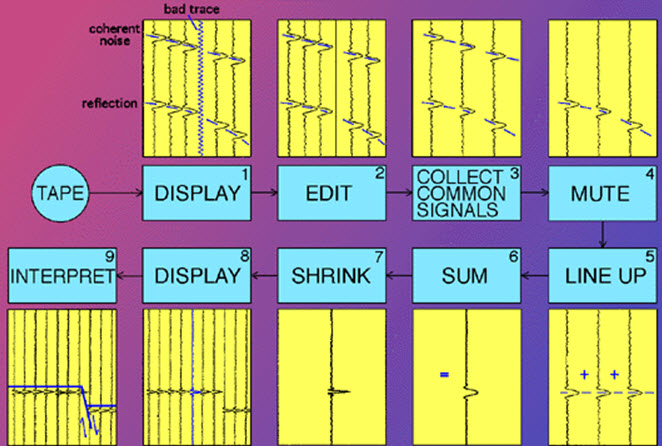|
Signal Regeneration
In telecommunications, signal regeneration is signal processing that restores a signal, recovering its original characteristics. The signal may be electrical, as in a repeater on a T-carrier line, or optical, as in an OEO optical cross-connect An optical cross-connect (OXC) is a device used by telecommunications carriers to switch high-speed optical signals in a fiber optic network, such as an optical mesh network. In the 1980s, when transmission speeds supported by optical fibers in .... The process is used when it is necessary to change the signal type in order to transmit it via different media. Once it comes back to the original medium the signal is usually required to be regenerated so as to bring it back to its original state. See also * * Regenerator (telecommunication) References Telecommunications equipment Signal processing Telecommunications techniques {{telecom-stub ... [...More Info...] [...Related Items...] OR: [Wikipedia] [Google] [Baidu] |
Telecommunications
Telecommunication, often used in its plural form or abbreviated as telecom, is the transmission of information over a distance using electronic means, typically through cables, radio waves, or other communication technologies. These means of transmission may be divided into communication channels for multiplexing, allowing for a single medium to transmit several concurrent Session (computer science), communication sessions. Long-distance technologies invented during the 20th and 21st centuries generally use electric power, and include the electrical telegraph, telegraph, telephone, television, and radio. Early telecommunication networks used metal wires as the medium for transmitting signals. These networks were used for telegraphy and telephony for many decades. In the first decade of the 20th century, a revolution in wireless communication began with breakthroughs including those made in radio communications by Guglielmo Marconi, who won the 1909 Nobel Prize in Physics. Othe ... [...More Info...] [...Related Items...] OR: [Wikipedia] [Google] [Baidu] |
Signal Processing
Signal processing is an electrical engineering subfield that focuses on analyzing, modifying and synthesizing ''signals'', such as audio signal processing, sound, image processing, images, Scalar potential, potential fields, Seismic tomography, seismic signals, Altimeter, altimetry processing, and scientific measurements. Signal processing techniques are used to optimize transmissions, Data storage, digital storage efficiency, correcting distorted signals, improve subjective video quality, and to detect or pinpoint components of interest in a measured signal. History According to Alan V. Oppenheim and Ronald W. Schafer, the principles of signal processing can be found in the classical numerical analysis techniques of the 17th century. They further state that the digital refinement of these techniques can be found in the digital control systems of the 1940s and 1950s. In 1948, Claude Shannon wrote the influential paper "A Mathematical Theory of Communication" which was publis ... [...More Info...] [...Related Items...] OR: [Wikipedia] [Google] [Baidu] |
Signal (electrical Engineering)
A signal is both the process and the result of transmission of data over some media accomplished by embedding some variation. Signals are important in multiple subject fields including signal processing, information theory and biology. In signal processing, a signal is a function that conveys information about a phenomenon. Any quantity that can vary over space or time can be used as a signal to share messages between observers. The '' IEEE Transactions on Signal Processing'' includes audio, video, speech, image, sonar, and radar as examples of signals. A signal may also be defined as observable change in a quantity over space or time (a time series), even if it does not carry information. In nature, signals can be actions done by an organism to alert other organisms, ranging from the release of plant chemicals to warn nearby plants of a predator, to sounds or motions made by animals to alert other animals of food. Signaling occurs in all organisms even at cellular level ... [...More Info...] [...Related Items...] OR: [Wikipedia] [Google] [Baidu] |
Repeater
In telecommunications, a repeater is an electronic device that receives a signal and retransmits it. Repeaters are used to extend transmissions so that the signal can cover longer distances or be received on the other side of an obstruction. Some types of repeaters broadcast an identical signal, but alter its method of transmission, for example, on another frequency or baud rate. There are several different types of repeaters; a telephone repeater is an amplifier in a telephone line, an optical repeater is an optoelectronic circuit that amplifies the light beam in an optical fiber cable; and a radio repeater is a radio receiver and transmitter that retransmits a radio signal. A broadcast relay station is a repeater used in broadcast radio and television. Overview When an information-bearing signal passes through a communication channel, it is progressively degraded due to loss of power. For example, when a telephone call passes through a wire telephone line, some of the p ... [...More Info...] [...Related Items...] OR: [Wikipedia] [Google] [Baidu] |
T-carrier
The T-carrier is a member of the series of carrier systems developed by AT&T Bell Laboratories for digital transmission of multiplexed telephone calls. The first version, the Transmission System 1 (T1), was introduced in 1962 in the Bell System, and could transmit up to 24 telephone calls simultaneously over a single transmission line of copper wire. Subsequent specifications carried multiples of the basic T1 (1.544 Mbit/s) data rates, such as T2 (6.312 Mbit/s) with 96 channels, T3 (44.736 Mbit/s) with 672 channels, and others. Although a ''T2'' was defined as part of AT&T's T-carrier system, which defined five levels, T1 through T5, only the T1 and T3 were commonly in use.1999 ad: On the left, in an aisle seat, a man who very much "filled" his airline seat while on the right side of the aisle is a height-challenged man whose shoe toes barely reach the floor Transmission System 1 The T-carrier is a hardware specification for carrying multiple time-division m ... [...More Info...] [...Related Items...] OR: [Wikipedia] [Google] [Baidu] |
Optical Communication
Optical communication, also known as optical telecommunication, is communication at a distance using light to carry information. It can be performed visually or by using electronic devices. The earliest basic forms of optical communication date back several millennia, while the earliest electrical device created to do so was the photophone, invented in 1880. An optical communication system uses a transmitter, which encodes a message into an optical signal, a channel, which carries the signal to its destination, and a receiver, which reproduces the message from the received optical signal. When electronic equipment is not employed the 'receiver' is a person visually observing and interpreting a signal, which may be either simple (such as the presence of a beacon fire) or complex (such as lights using color codes or flashed in a Morse code sequence). Modern communication relies on optical networking systems using optical fiber, optical amplifiers, lasers, switches, rout ... [...More Info...] [...Related Items...] OR: [Wikipedia] [Google] [Baidu] |
Optical Cross-connect
An optical cross-connect (OXC) is a device used by telecommunications carriers to switch high-speed optical signals in a fiber optic network, such as an optical mesh network. In the 1980s, when transmission speeds supported by optical fibers increased from to , carrier networks developed and introduced digital cross connects to restore , , and traffic. There are several ways to realize an OXC: * Opaque OXCs (electronic switching) - One can implement an OXC in the electronic domain: all the input optical signals are converted into electronic signals after they are demultiplexed by demultiplexers. The electronic signals are then switched by an electronic switch module. Finally, the switched electronic signals are converted back into optical signals by using them to modulate lasers and then the resulting optical signals are multiplexed by optical multiplexers onto outlet optical fibers. This is known as an "OEO" (Optical-Electrical-Optical) design. Cross-connects based on an ... [...More Info...] [...Related Items...] OR: [Wikipedia] [Google] [Baidu] |
Regenerator (telecommunication)
A regenerator in a telecommunications context is a type of repeater that is used in copper line or optical fibre line transmission systems. The regeneration function involved also appears in other types of systems, e.g. computer networking systems. A digital signal travelling a significant distance will become weaker and distorted and require periodic help to continue its journey successfully. A simple amplifier will only increase the amplitude of the signal and will not correct the distortion of the waveform shape. A threshold detector can be used to correct the amplitude levels although the exact time that the transition occurs may not be in the right place. This timing inaccuracy is referred to as jitter. A regenerator includes circuitry to recover the clock A clock or chronometer is a device that measures and displays time. The clock is one of the oldest Invention, human inventions, meeting the need to measure intervals of time shorter than the natural units such ... [...More Info...] [...Related Items...] OR: [Wikipedia] [Google] [Baidu] |
Telecommunications Equipment
Telecommunications equipment (also telecoms equipment or communications equipment) is a type of hardware which is used for the purposes of telecommunications. Since the 1990s the boundary between telecoms equipment and IT hardware has become blurred as a result of the growth of the internet and its increasing role in the transfer of telecoms data. Types Telecommunications equipment can be broadly broken down into the following categories: *Public switching equipment ** Analogue switches **Digital switches ***Voice over IP switches ***Virtual reality (VR) *Transmission equipment **Transmission lines *** Optical fiber *** Local loops **Base transceiver stations **Free-space optical communication ***Laser communication in space **Multiplexers **Communications satellites *Customer premises equipment (CPE) ** Customer office terminal **Private switches **Local area networks (LANs) **Modems **Mobile phones ** Landline telephones ** Answering machines ** Teleprinters ** Fax machines **Pa ... [...More Info...] [...Related Items...] OR: [Wikipedia] [Google] [Baidu] |
Signal Processing
Signal processing is an electrical engineering subfield that focuses on analyzing, modifying and synthesizing ''signals'', such as audio signal processing, sound, image processing, images, Scalar potential, potential fields, Seismic tomography, seismic signals, Altimeter, altimetry processing, and scientific measurements. Signal processing techniques are used to optimize transmissions, Data storage, digital storage efficiency, correcting distorted signals, improve subjective video quality, and to detect or pinpoint components of interest in a measured signal. History According to Alan V. Oppenheim and Ronald W. Schafer, the principles of signal processing can be found in the classical numerical analysis techniques of the 17th century. They further state that the digital refinement of these techniques can be found in the digital control systems of the 1940s and 1950s. In 1948, Claude Shannon wrote the influential paper "A Mathematical Theory of Communication" which was publis ... [...More Info...] [...Related Items...] OR: [Wikipedia] [Google] [Baidu] |





